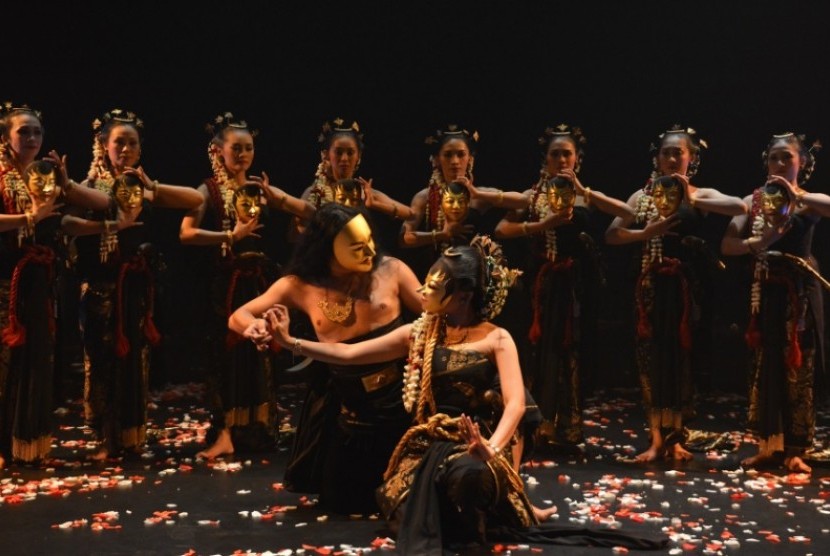REPUBLIKA.CO.ID, By Shelbi Asrianti/shelbiasrianti.blogspot.com
Woven pandanus mats outspread in the middle of the stage. Four people, two men and two women, sat there.
They sang macapat, the traditional poetry of Java. Three lanterns gave them a faint light.
The men singers chimed the kemanak, the lowest and highest part of saron (gamelan instrument). It produced the tinkling sound, that continued slowly, accompanied their hum.
Those macapat is the text of Serat Wedhatama, written by Mangkunegara IV. The classical literary was contained advices and life lessons.
"My grandfather’s macapat reminded us to not being cocky in this life. We must applying the andhap asor principle, or being humble," said Bendoro Raden Ayu Atilah Soeryadjaya.
That fifteen minutes macapat is the first segment of "The Jewel of Java", her art performance. Atilah is Keraton Solo princess that often composing the national and international art show production.
"The Jewel of Java" is an artistic composition that combined the form of literature (macapat), music (gamelan and cangkeman concert), and dance (Bedaya dance).
Atilah interpreted the entire repertoires as the cultural treasure and heritage tradition of Java. "Macapat, gamelan, cangkeman, Bedaya dance; all of them are the jewel of Java," she precepted.
The artistic recital shown in the premiere festival of "Helatari Salihara 2015" which took place at the Salihara Theatre, 3-4 June 2015. Previously, that performance also staged abroad, in Japan and Malaysia.
The second fragment is the gamelan concert collaborated with cangkeman or acapela. Blacius Subono, the music director, trying to bridge the tradition and modernity.
About 12 musicians playing the gamelan sound with the contemporary element from Asian and Western. The concert that lasted for fifteen minutes was also applied the additional modern instrument, snare drum and tom-tom.
"It is not a pure gamelan orchestra. There are some modifications, featuring an energetic and contemporary side," Atilah explained.
Next, the Bedaya dance titled “Samparan Matah Ati” became the closing show. Fragment from the “Matah Ati” dance recital arranged by Atilah combines the classical Javanese movement with modern theater.
The 40-minute dance is performed by two main dancers (Fajar Satriadi and Rambat Yulianingsih) and eight female dancers. The dance conceived drama about the journey of love story and the struggle of a woman named Rubiyah or Matah Ati.
That beautiful lady rebelled against the Dutch colonialists. Her tender manner changed after fierce fighting against insolence.
She is even willing to fight in war and uncovered her wrap named jarit. Matah Ati faithfully accompanied her soul mate, Prince Raden Mas Said.
Atilah phrased, after Raden Mas Said married Matah Ati, she gave birth to Mangkunegaran lineage. The story was really taking placed in Java at the 18th century. Literally, "Matah" means serving, and "Ati" means heart.
"This is the chronicle that based on a true story" said Atilah, who devotes herself to make Solo as a center of heritage and culture.
Choreography in "Samparan Matah Ati" composed by the dance maestro, Daryono Darmo Rejono. The lecturer in ISI Surakarta who start dancing since 10 years old was translating the Matah Ati’s grapple through the dance moves.
Artistic director "The Jewel of Java", Jay Subyakto, remarked that he wanted to bring the beauty of a complete configuration. The sequences split are his method to regulated viewer's emotions, so they will not get bored.
In the first segment, viewers enjoyed the lilting macapat song. The second segment presented a powerful evocative concert. Then, the show ended with the Bedaya dance’s graceful movement. "We try to set the performance rhythm, and it is effective," Jay added.



